If you’re here, you’re probably wondering how to produce music like an absolute professional, regardless of your current level of experience.
The art of music production is intricate, layered, and deeply expressive.
But don’t worry, even the most complex forms of art can be understood with the right guidance, which we’ll provide you with today.
We have the tools, insights, and secrets to help you craft masterpieces in no time.
In today’s article, we’ll be breaking down:
- How to set up your ideal music environment ✓
- Mastering the art of digital workstations ✓
- Navigating the vast world of virtual instruments ✓
- Crafting songs with the proper structure ✓
- Elevating your tracks with audio effects ✓
- Achieving the perfect balance of mixing & mastering ✓
- Expert tips & tricks for standout production ✓
- Navigating the intricate music industry ✓
By the time you finish this guide, you’ll be equipped with the knowledge to produce music like an expert.
As well as be several steps closer to launching your hits to the top of the charts.
So, let’s dive in…
Table of Contents
Setting Up Your Music Production Environment
Embarking on a hip-hop production journey, or looking to enhance your workflow? The first step is creating the perfect environment to produce your masterpieces.
-
Digital Audio Workstation (DAW) Choices
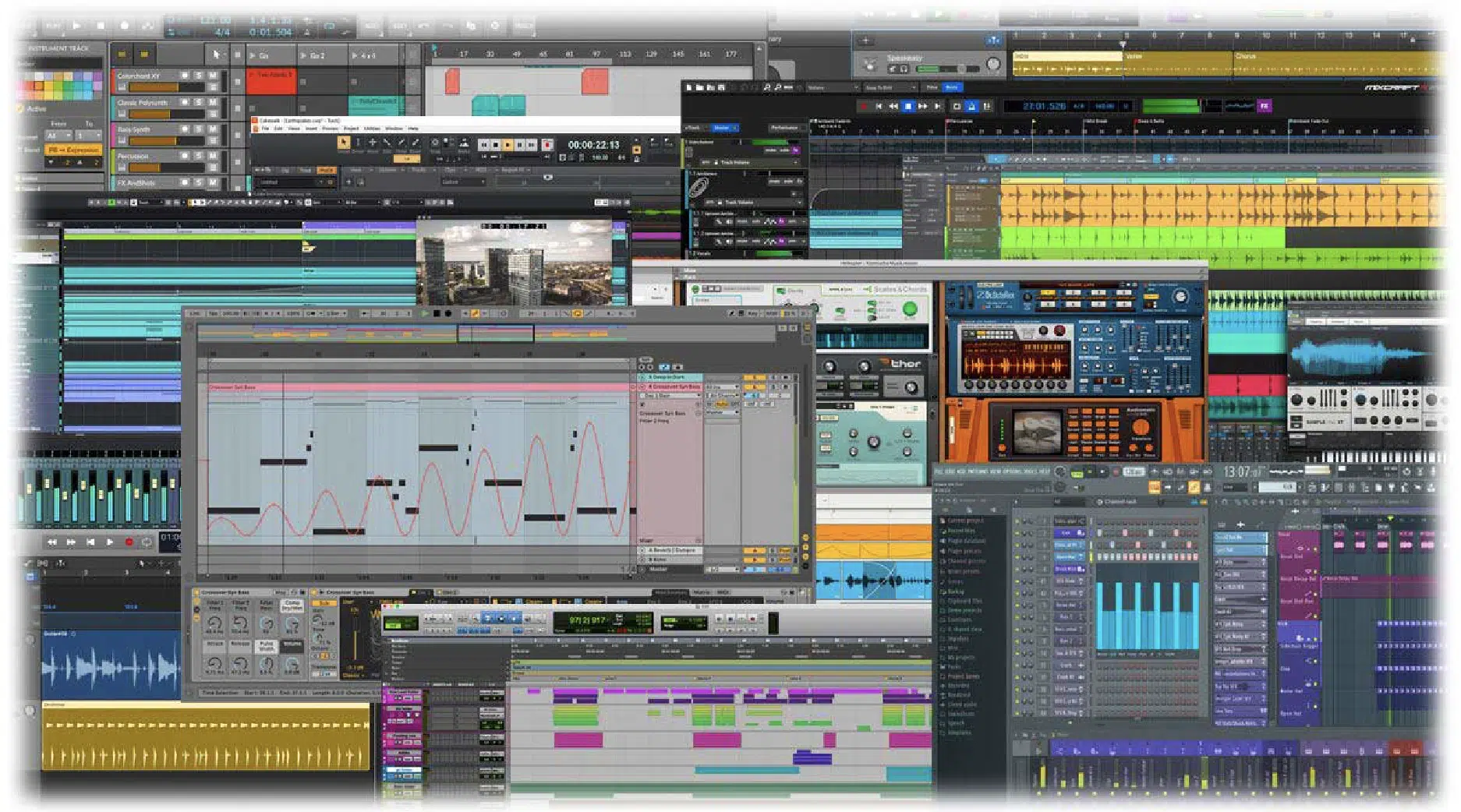
When you first start producing music, the choice of a digital audio workstation can be super overwhelming.
But, let’s simplify it…
At the core, a digital audio workstation is where your creativity takes shape and every sound finds its home.
One might ask, “Why do so many hip-hop artists swear by FL Studio?”
Well, it’s not just the slick interface of this particular music production software 一 it’s the pattern-based workflow that makes beat-making so intuitive and for ideas to flow seamlessly.
On the other hand, Pro Tools is a titan in the industry.
It stands its ground due to its phenomenal recording capabilities (especially useful when working with multiple artists).
Then there’s Ableton Live, which has most certainly broke the mold.
While initially embraced by electronic musicians, hip-hop music producers found joy in its loop-based sequencing and its unparalleled ability for live improvisation.
The bottom line? No DAW is “better.”
It’s about which platform resonates with your style and streamlines your creativity.
Regardless of your choice, investing time in mastering your DAW will allow you to enhance your workflow tenfold.
After all, it’s the tool you’ll use most, so it’s essential to know its intricacies inside and out when you’re working with your own music.
-
Essential Gear: The Audio Interface
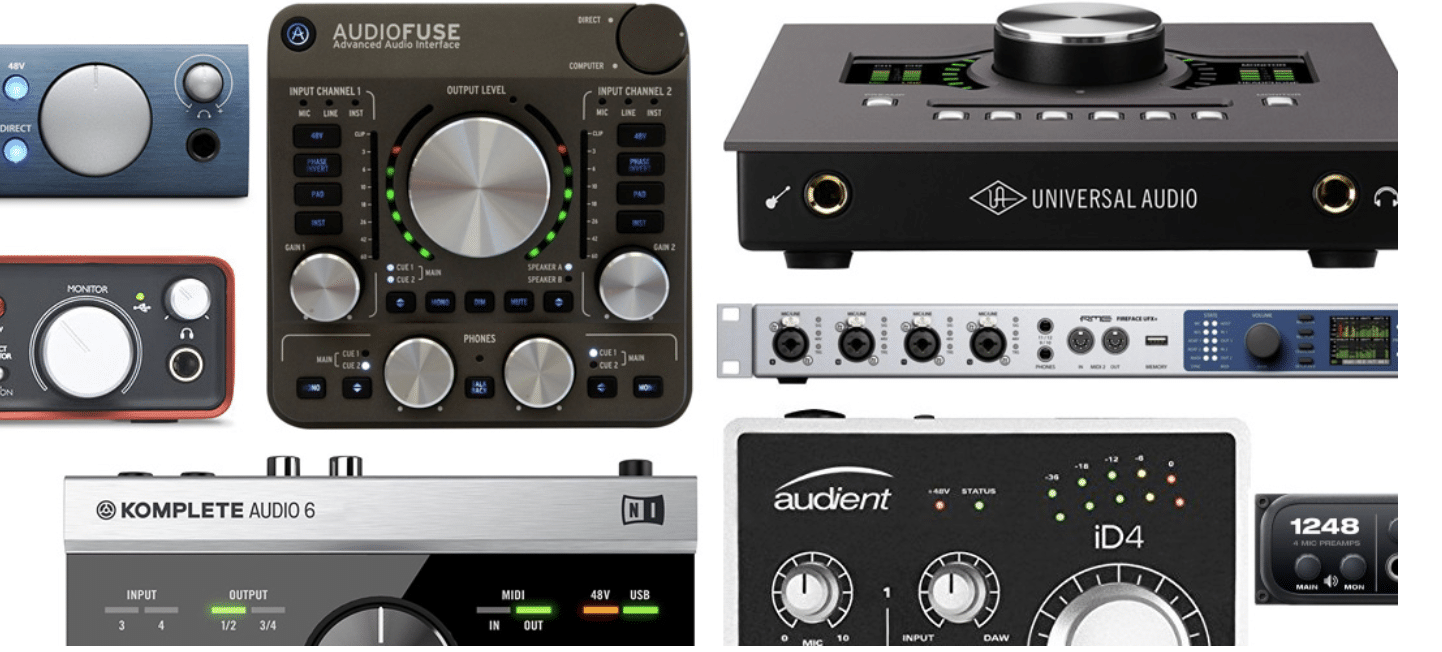
An audio interface is the unsung hero of any music production setup.
Acting as a bridge between your instruments and your DAW, it ensures pristine sound capture.
At its core, the audio interface translates analog signals from your instruments into a digital format that your DAW can manipulate.
Conversely, it can also convert digital audio from your computer into analog signals for your speakers.
For beginners: Budget-friendly interfaces like Focusrite Scarlett 2i2 come highly recommended.
For professionals: The Universal Audio Apollo Twin or similar high-end devices might become more appealing.
Ultimately, the audio interface’s role is to guarantee that the brilliance of your real-world sounds translates perfectly into your digital workspace without any loss in quality.
If you’re looking for the best audio interfaces of 2023, we’ve got you covered.
-
Studio Considerations
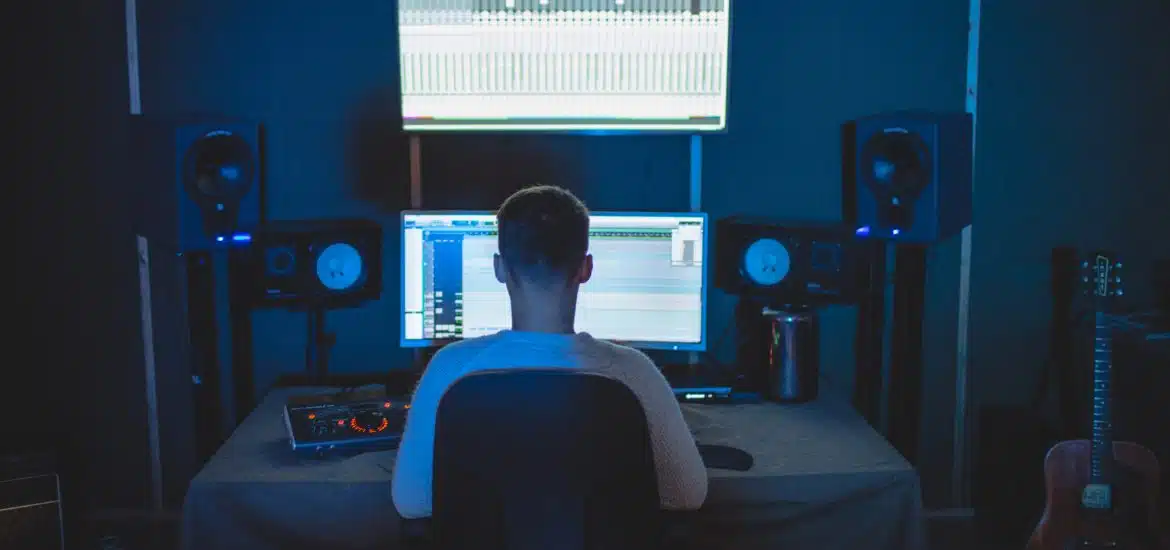
Whether you’re transforming a bedroom corner or renting a dedicated space, the studio’s environment significantly influences your sound’s final quality.
For home studios, acoustics should be your top priority.
Soundproofing a home studio can eliminate external noises, and installing bass traps and diffusers can minimize internal audio reflections.
This ensures clarity when you produce music, record music, and mix music in your home studio.
If you’d like to learn way more about setting up your home studio (in detail), we’ve got you covered.
Professional studios, while pricier, come equipped with top-tier equipment and ideal acoustics.
A professional studio environment can be especially beneficial for critical recording sessions.
Whether home or professional, your studio should be a space that:
- Inspires creativity
- Promotes focus
- Is conducive to capturing the purest sound possible
So, make sure to invest your heart and soul into the process of building your very own home recording studio.
After all, your home studio is where you’ll spend the majority of your time if you’re anything like me.
-
Virtual Instruments: Beyond the Basics
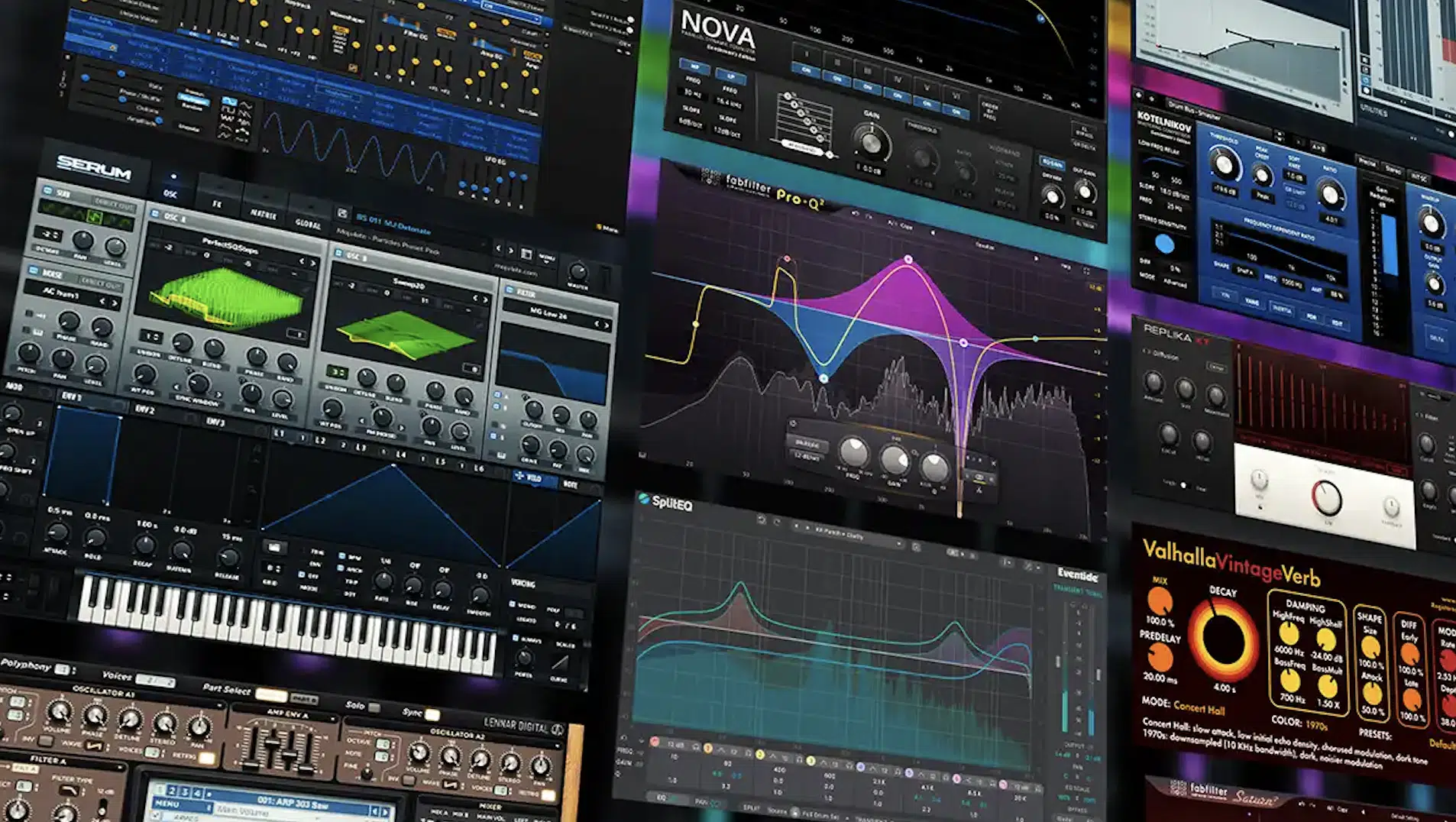
In the digital age, and in today’s music industry, Virtual Studio Technology (VST) instruments have emerged as indispensable tools.
They offer a vast array of sounds at your fingertips.
VSTs can emulate real-world instruments or create entirely new sounds, thereby expanding your musical palette exponentially.
Take Native Instruments’ Kontakt, for instance…
This isn’t just music production software; it’s a journey across the globe that can help you get a musical idea in a snap.
From the rhythmic beats of West African drums to the mesmerizing melodies of a grand piano, Kontakt places the world in your home studio.
However, while Kontakt offers realism, Spectrasonics’ Omnisphere offers dreamscapes.
It’s the realm where a music producer can mold the unimaginable 一 crafting lush pads for a chorus or the atmospheric sounds that lurk in the background.
But if raw synthesis is your game, Xfer’s Serum is the playground.
With its visual interface, producers can craft sounds while seeing the very waves they manipulate.
It’s both science and art, an interplay that’s at the heart of modern music production.
NOTE: However, while VSTs offer convenience, it’s essential to invest in high-quality ones and understand their parameters deeply.
This will ensure that your tracks don’t sound generic.
So, when you’re learning how to produce music, don’t forget it’s all about balance.
-
Ambient Music/Sounds & Electronic Flavors
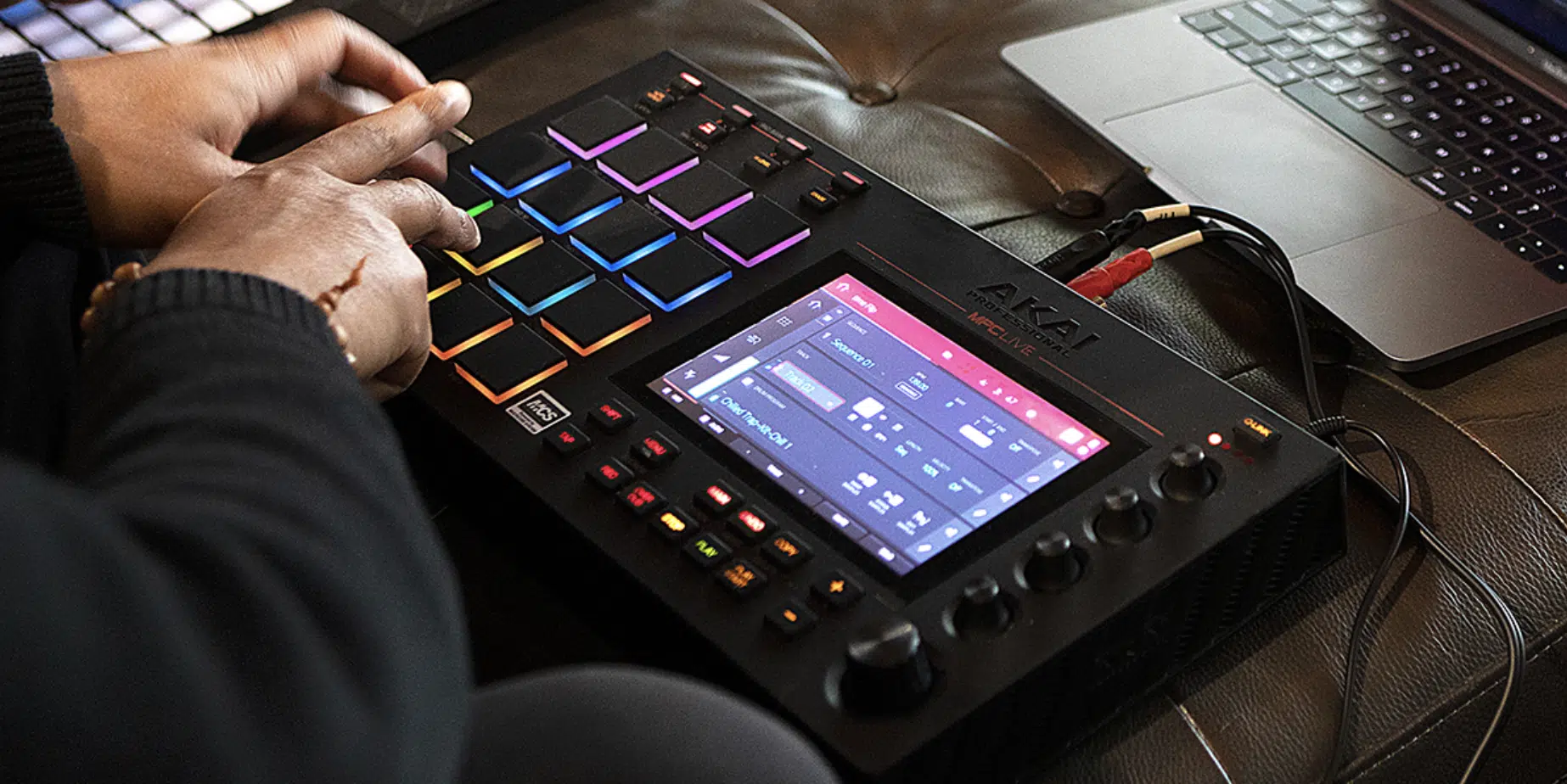
Hip-hop has long been a genre of evolution, and its recent embrace of ambient and electronic elements is testament to its adaptability.
Ambient sounds can lend your tracks a textured, atmospheric vibe 一 making them more immersive.
Think of the ethereal soundscapes crafted by producers like Clams Casino.
Electronic elements can add punch and modernity, such as:
Integrating these sounds requires a gentle balance.
It helps you make sure that the track remains grounded in hip-hop while also charting new sonic territories.
Plus it will help you gain unlimited musical ideas regarding your own audio and create music that your listeners (and other music producers) will be blown away by.
Crafting Your Masterpiece
Learning how to produce music is both an art and a science.
As you delve deeper, you’ll find that mastering the technicalities enhances your creative freedom as a music producer, whether it’s just one sole audio file or an entire track.
-
Foundations of Music Theory
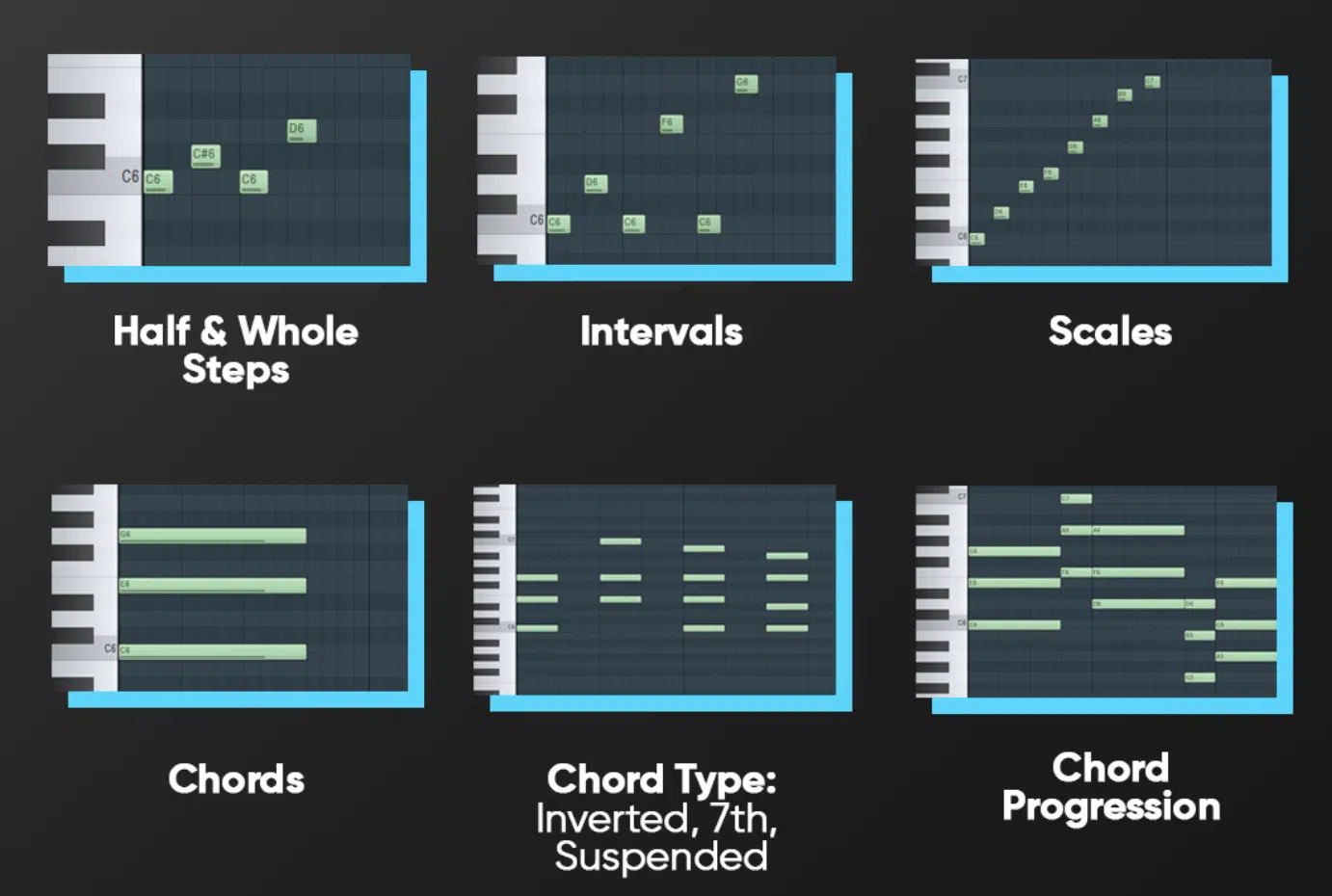
While some hip-hop producers might disregard formal music theory, even a basic understanding can open up a whole new world of possibilities.
At its heart, music theory provides a framework and helps you understand why certain notes or chords elicit specific emotional responses.
For hip-hop, understanding scales is especially valuable.
For instance, the minor pentatonic scale, prevalent in blues, can be the backbone of a soulful hip-hop track.
Similarly, mastering chord progressions can aid in creating hooks that linger long after the track ends.
Chord progressions like ii-V-I are timeless and can be tailored to fit the hip-hop mold.
If you’d like to learn everything about music theory, in detail, you need to check out this music theory article.
-
Songwriting and Song Structure
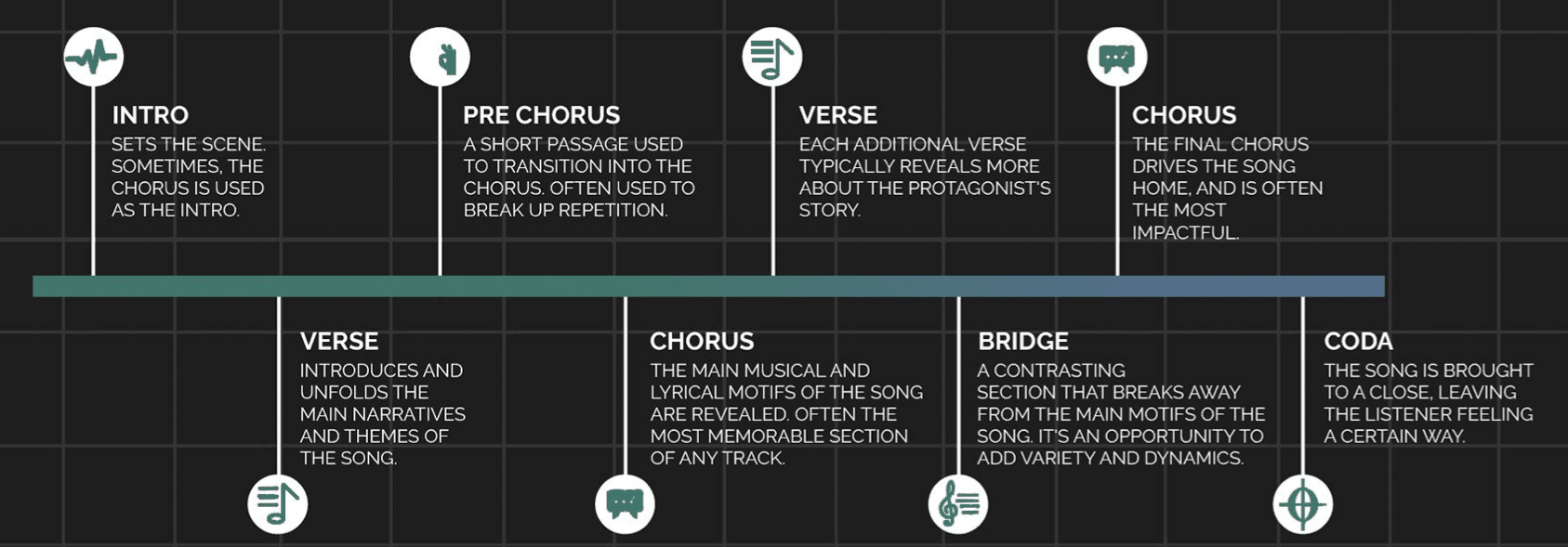
Music tells a story, and as a music producer learning how to produce music, you need to understand the breakdown of song structure.
Think of song structure as part of your music production process.
From the opening bars of a track to the final fade-out, there’s a narrative unfolding.
The intro isn’t just the beginning, it helps set the tone for the overall:
- Mood
- Atmosphere
- Vibe
- Story to come
As the beat drops, the verse takes over.
It’s where the rapper wears their heart on their sleeve, sharing stories, emotions, and experiences across (typically) 16 bars.
Then comes the chorus or the hook.
It’s more than just repetition 一 it’s the heart of the song and the part that listeners hum along to and always remember.
Think of all great music, it always has a super catchy, memorable hook/chorus.
But even within the structured realm of verses and hooks, there’s a place for change: the bridge.
It’s a brief departure in any good song, offering listeners a fresh perspective before diving back into familiar territory.
When crafting a hip-hop track, understanding this song structure is pivotal.
It’s the framework upon which raw emotion, rhythm, and rhyme are successfully built.
For aspiring lyricists, tools like rhyme dictionaries can be invaluable when you’re writing lyrics or learning to play melodies.
But remember, while rhymes are essential, the message and delivery often resonate more.
Listen to iconic tracks and study their structure.
Understand the ebb and flow, the crescendos, and the pauses.
These insights can guide your songwriting journey and ensure you’re writing music that resonates.
-
Recording Excellence
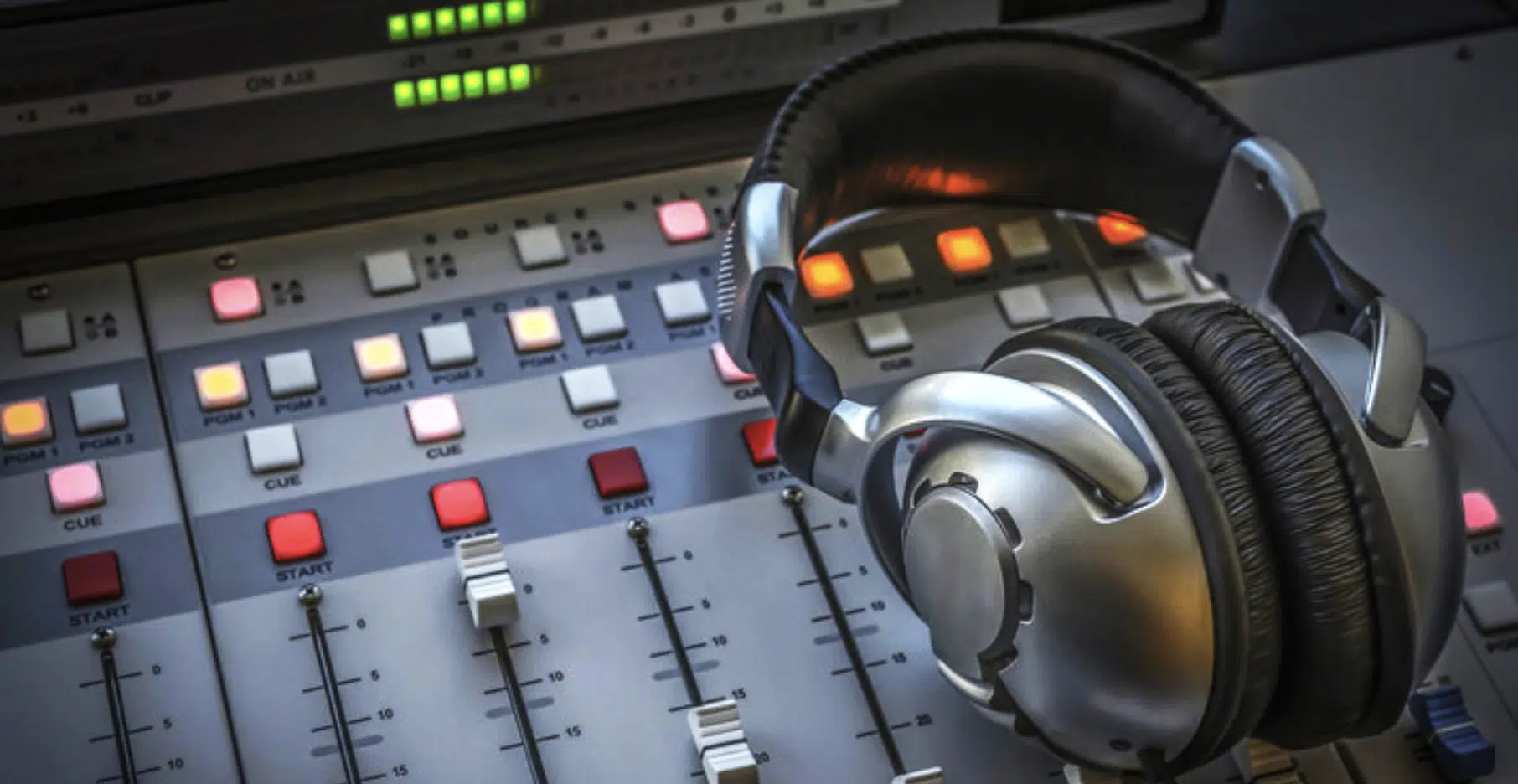
The recording process is where your track starts to truly come alive.
When you record music, it’s more than just capturing sound 一 it’s about ensuring that the artist’s emotion and the track’s essence are preserved.
The recording space/environment (as discussed earlier) plays a super important role in terms of recorded music.
But beyond the studio’s acoustics, the artist’s comfort is paramount.
Ensure they’re in the right headspace, know their verses like the back of their hand, are hydrated, and prepared to record.
Next, recording equipment, like microphone choice and placement can make or break a session.
- Dynamic mics (like the Shure SM58) 一 Might be perfect for forceful, energetic verses.
- Condenser mics 一 Can capture softer nuances.
Finally, as an aspiring music producer, learning how to produce music, you need to be aware of how to monitor the levels.
Peaks can result in distortion, while recording too low might introduce noise during post-production amplification.
Adding Audio Effects
Audio effects, when used correctly, can enhance your track’s sonic character.
Audio effects can transform simple sounds into sonic wonders 一 adding depth and dimension.
Here are some basic production tools (audio effects) that you absolutely need to be familiar with as a music producer in the music production realm.
-
Reverb
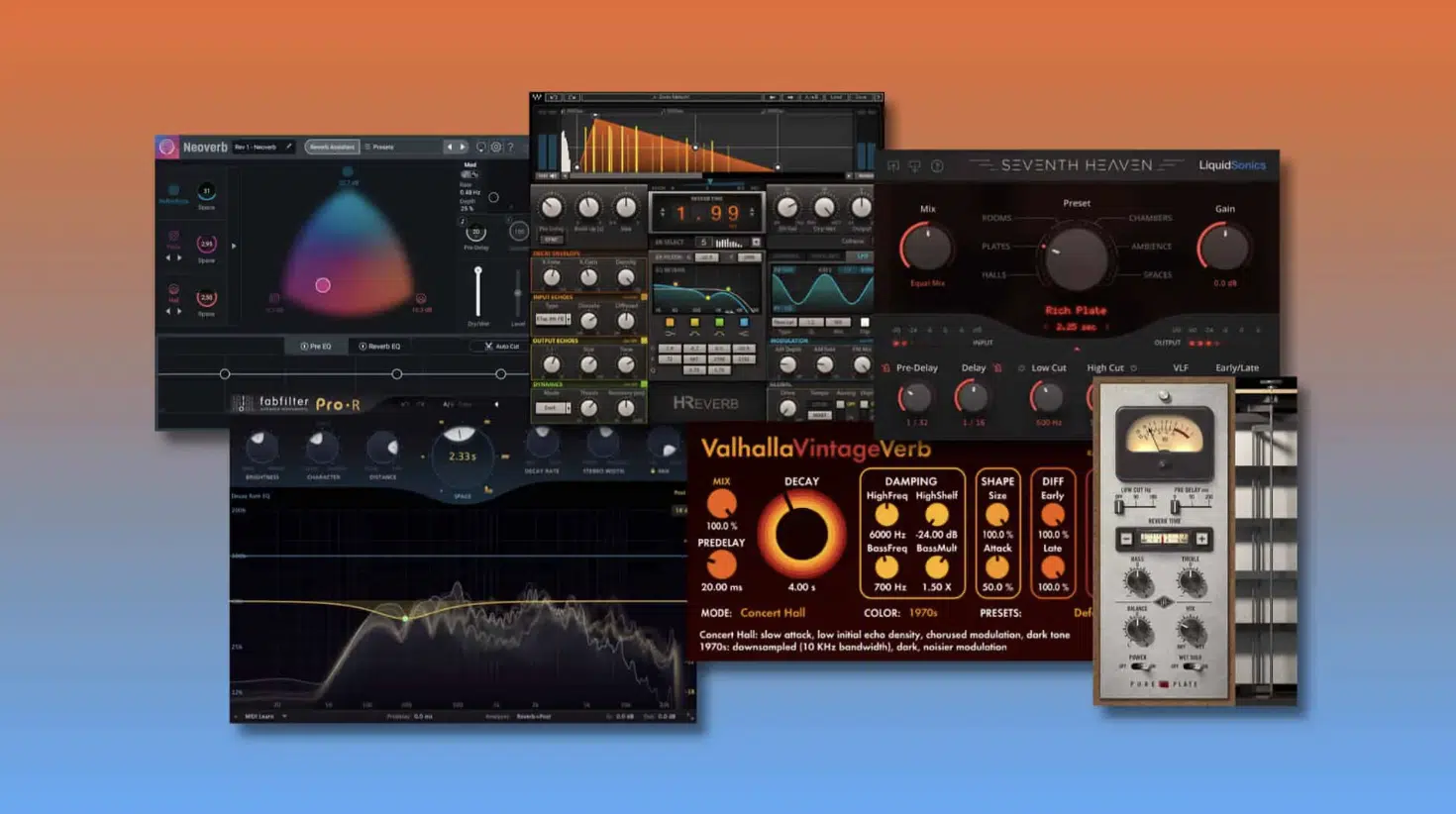
Reverb is an essential effect in any music producer arsenal.
This is especially true if you’re just starting to learn how to produce music.
It creates an ambiance and gives a sense of space by simulating environments from small rooms to vast halls.
Using reverb can help vocals or instruments sit better in a mix 一 providing additional depth and space.
-
Delay/Echo
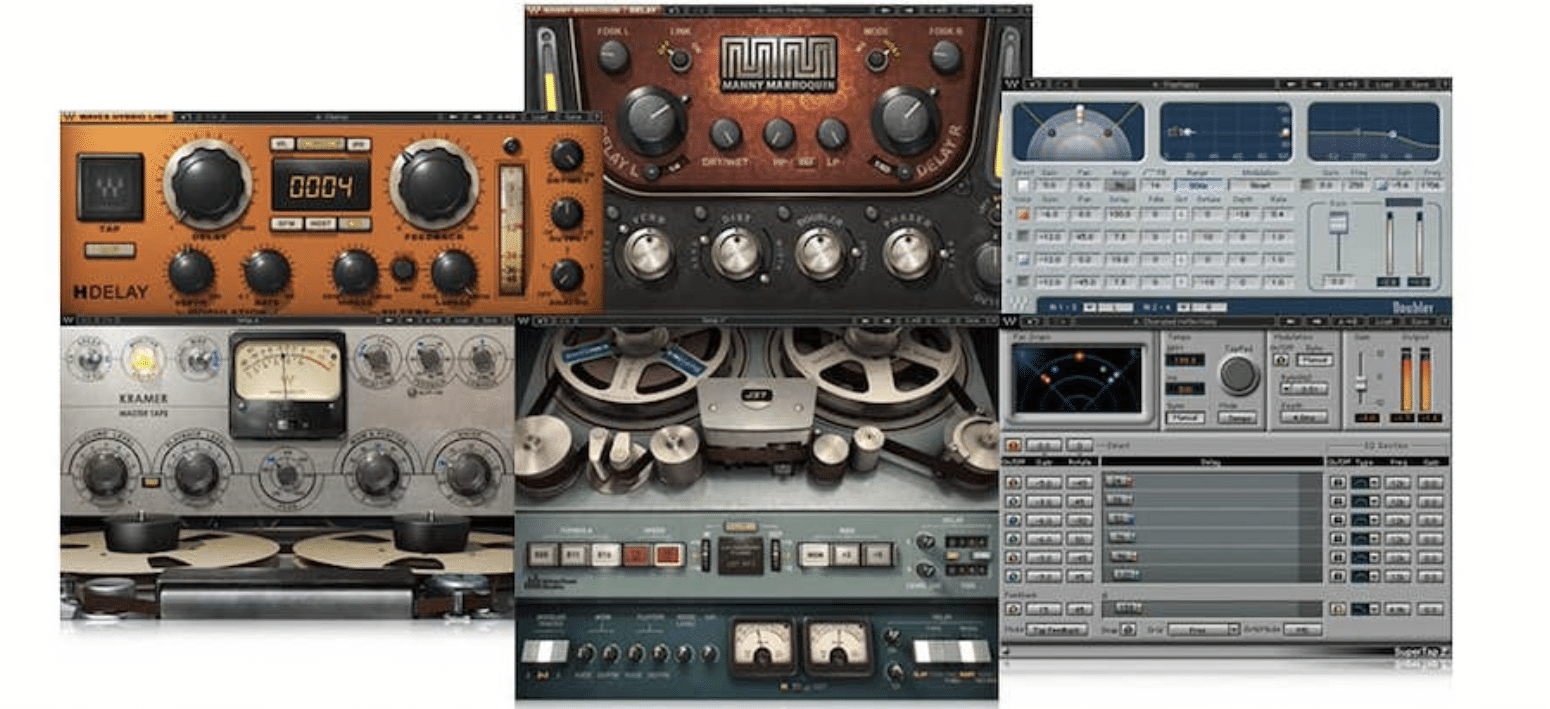
Delay/echo is a time-based effect that takes the input sound and repeats it after a specified duration.
Delays can be simple single echoes or complex rhythmic patterns.
Hip-hop often utilizes short slapback delays or longer, synchronized delays to add depth and rhythmic interest.
-
Distortion/Overdrive
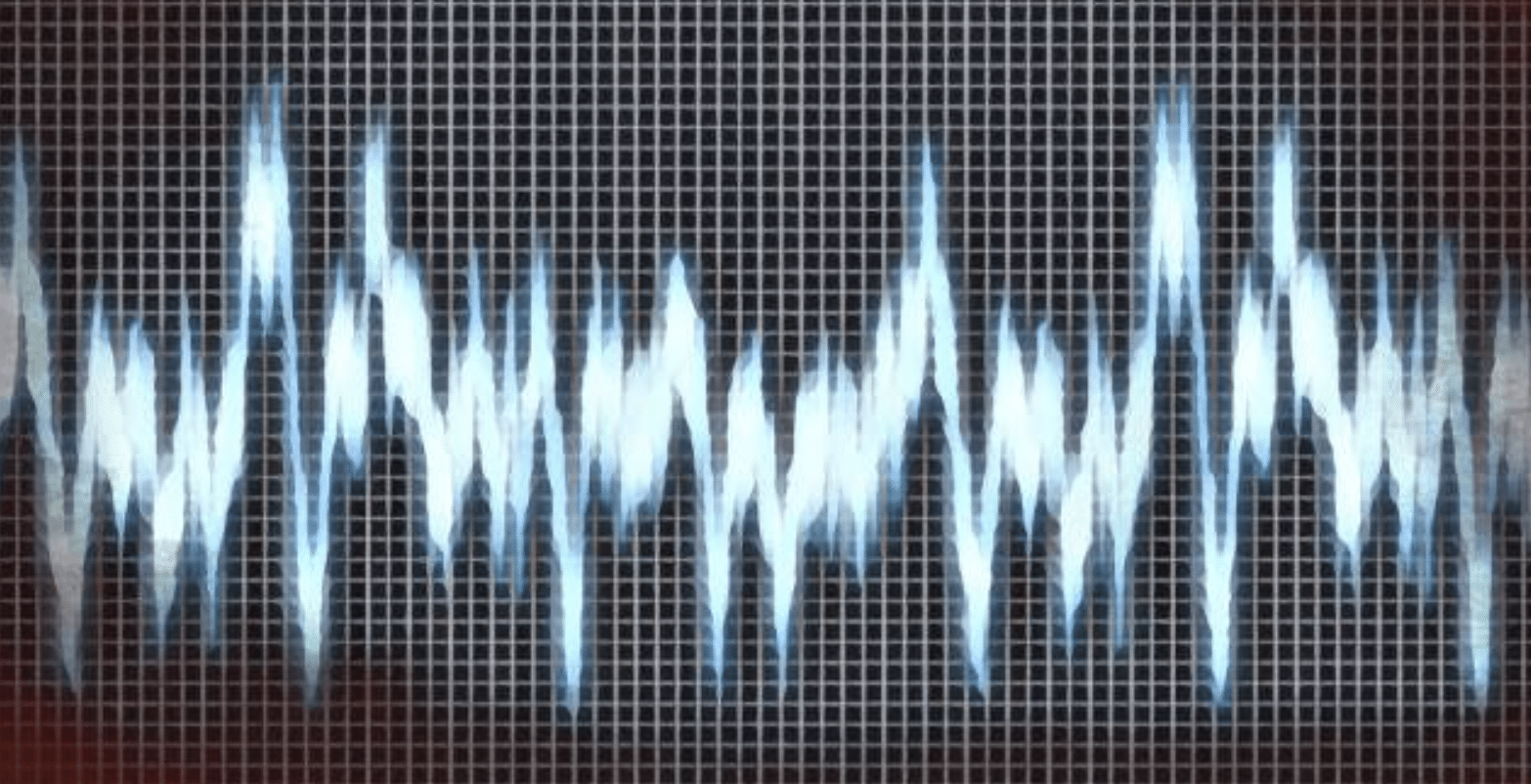
Distortion/overdrive is not just for rock guitars, not by a long shot.
Distortion can add harmonics and grit to any sound that you can possibly think of.
In hip-hop, it’s often used subtly on vocals or more prominently on 808 basslines to give them character and presence.
-
Chorus/Flanger/Phaser
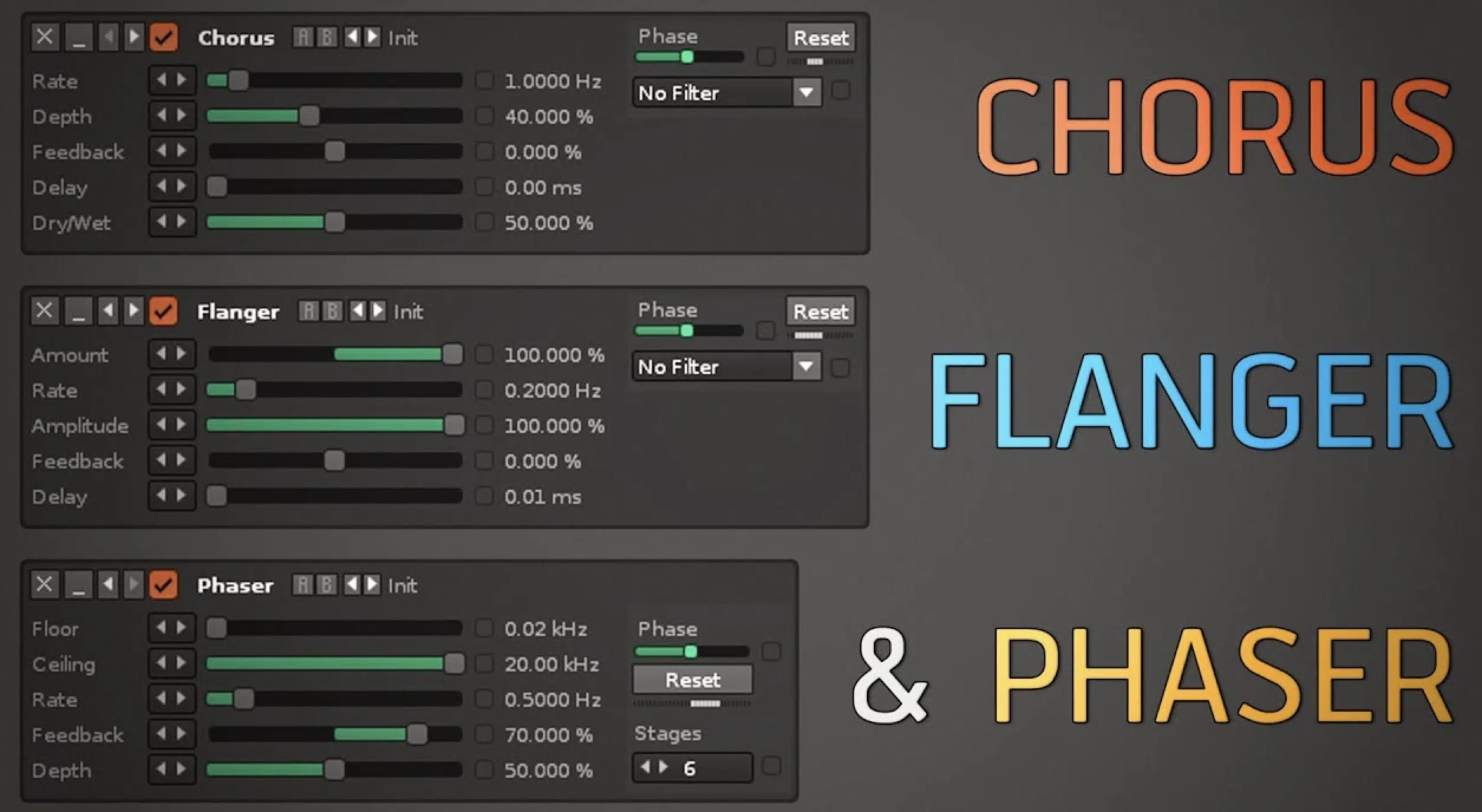
These modulation effects add depth and movement to sounds by slightly altering the pitch (chorus) or by comb-filtering the sound; flanger and phaser.
A chorus might thicken a vocal, while a flanger could give a swirling effect to hi-hats or snares.
-
Equalization (EQ)
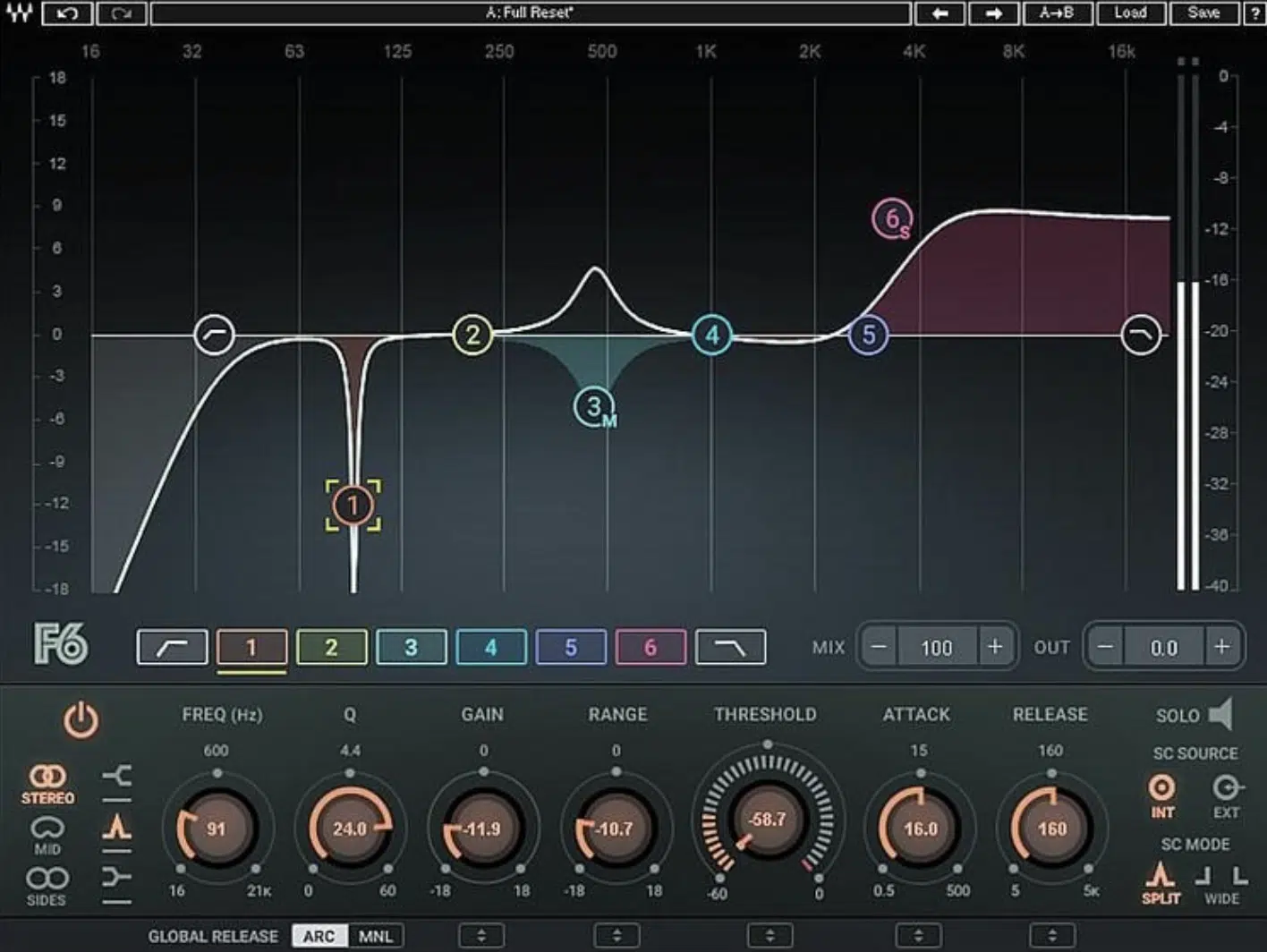
Think of EQ as your audio’s tone control.
It allows music producers to boost or cut specific frequency ranges 一 making it an invaluable tool for shaping and fixing sounds.
Carving out unnecessary frequencies or enhancing certain characteristics of an instrument is made possible with EQ.
-
Compression
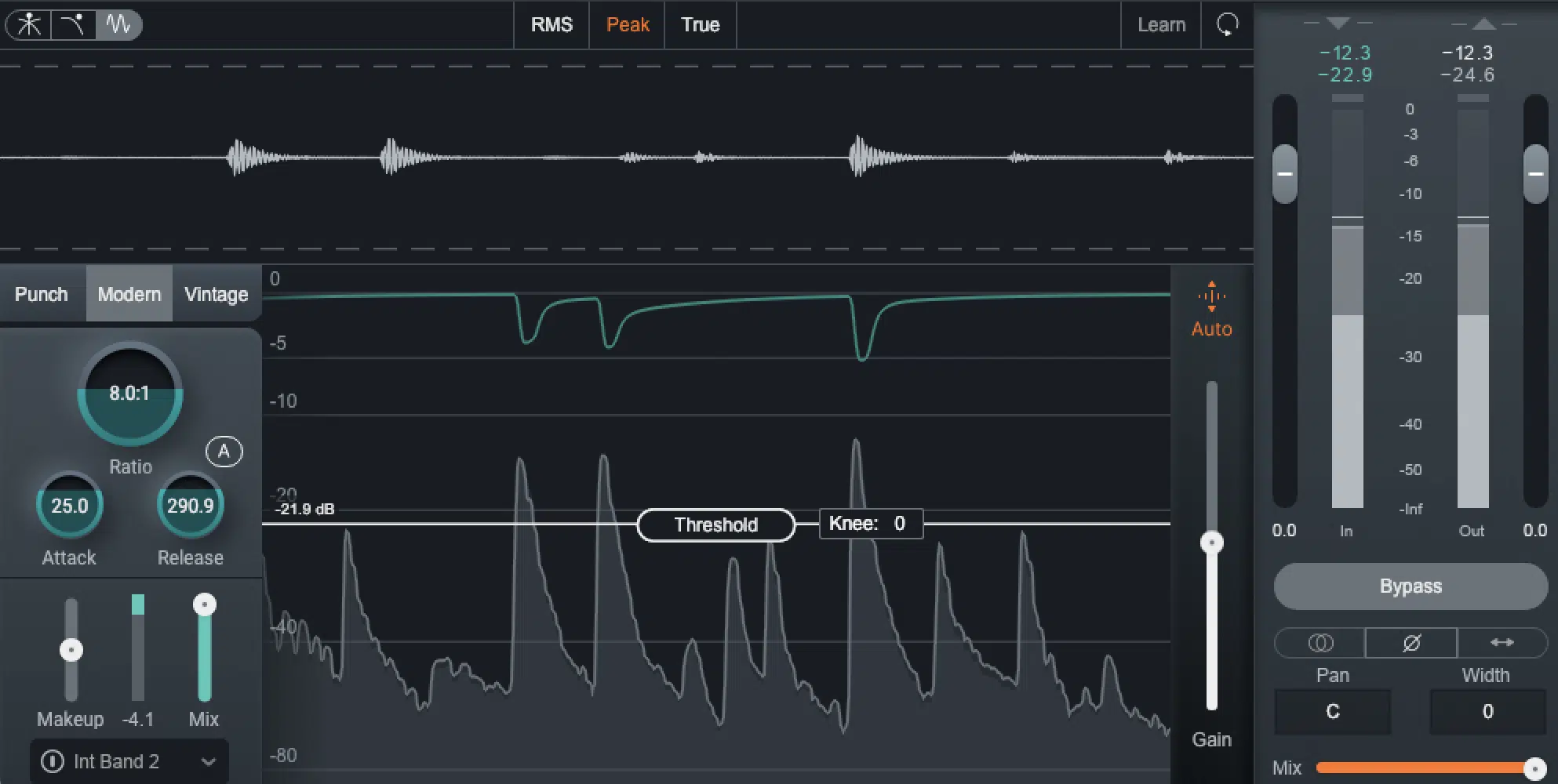
Compression is a cornerstone of modern music production, compressors reduce the dynamic range of audio.
By doing so, they can:
- Make quiet parts louder
- Loud parts quieter
- Ensure a consistent volume
Compression is crucial for vocals and making drums successfully punch through the mix.
Mixing: Balancing Your Sound
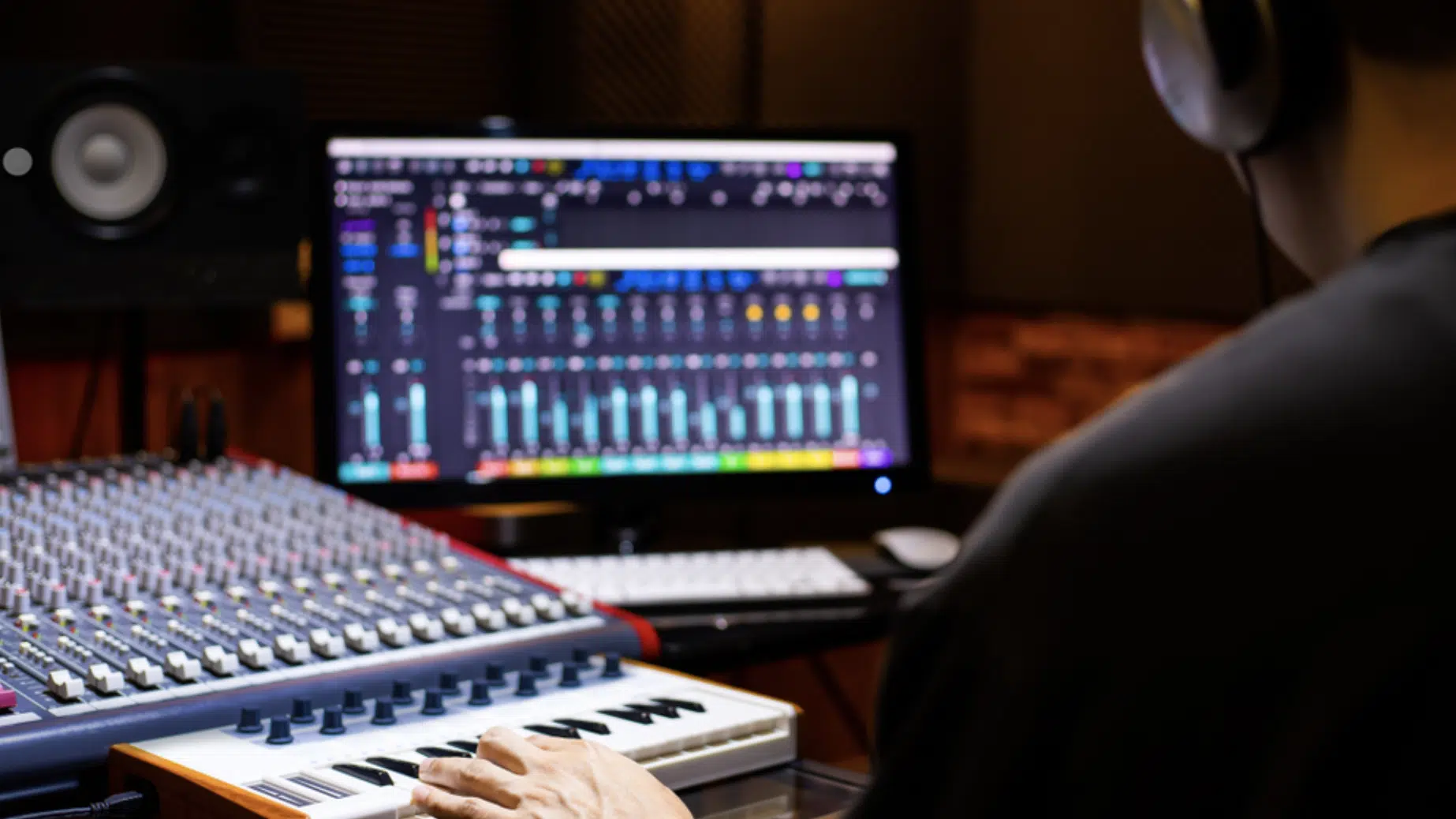
Mixing (the mixing stage) is going to be a huge part of your music production journey.
And, when you’re learning how to produce music, it’s crucial that you understand it in all it’s glory.
It’s like orchestrating a symphony of sounds 一 each element (from vocals to other instruments) needs its space to shine.
#1. Start By Setting Levels
This ensures that the foundational elements like the kick drum and bassline don’t overpower the rest.
When you create music, it’s essential to set the levels correctly in order to produce a good mix.
#2. Panning Is An Essential Tool to Give Your Mix Width
Imagine a stage – you wouldn’t place every musician in the center.
For instance, hi-hats can be slightly panned to the left and a secondary synth might sit subtly to the right.
This creates an immersive stereo field for the listener.
#3. Frequency Clashes Can Muddy A Mix
Using an EQ, carve out space by reducing frequencies in competing instruments.
For example, if a bass guitar and kick drum clash, you might want to slightly attenuate the lower mids of the bass guitar.
This will allow the kick’s thump to come through clearly.
#4. Effects (Like Reverb & Delay) Can Provide A Sense of Depth And Space In a Mix
A lead vocal might benefit from a touch of reverb to sit it in a virtual ‘space’ in the mix, making it sound more natural.
Alternatively, a snare hit might get a slap-back delay for a classic hip-hop vibe.
#5. One Of The Secrets of Professional Mixes is Automation
Automation involves changing different parameters like volume, panning, or even EQ over time.
Let’s say during a bridge you want the guitars to gradually become the focal point…
By automating a volume increase for the guitars and perhaps a slight decrease for other elements, you can create that dynamic shift.
Automation breathes life into a mix, ensuring it’s not static and keeps the listener engaged.
#6. Reference Tracks Are Crucial
Pick a professionally mixed track with a similar vibe as yours, but not your own songs.
Listen to it frequently during the mixing process. This helps in ensuring your mix stands up to industry standards in terms of balance and frequency response.
Just check out some of your favorite artists songs for this process.
Mixing is a vast topic, and while these basics will get you started, remember that the best teacher is experience.
So, if you’re just learning how to produce music, don’t worry if it’s a little intimidating at first. With time, you’ll develop your own music production approach.
Mastering: The Final Touch
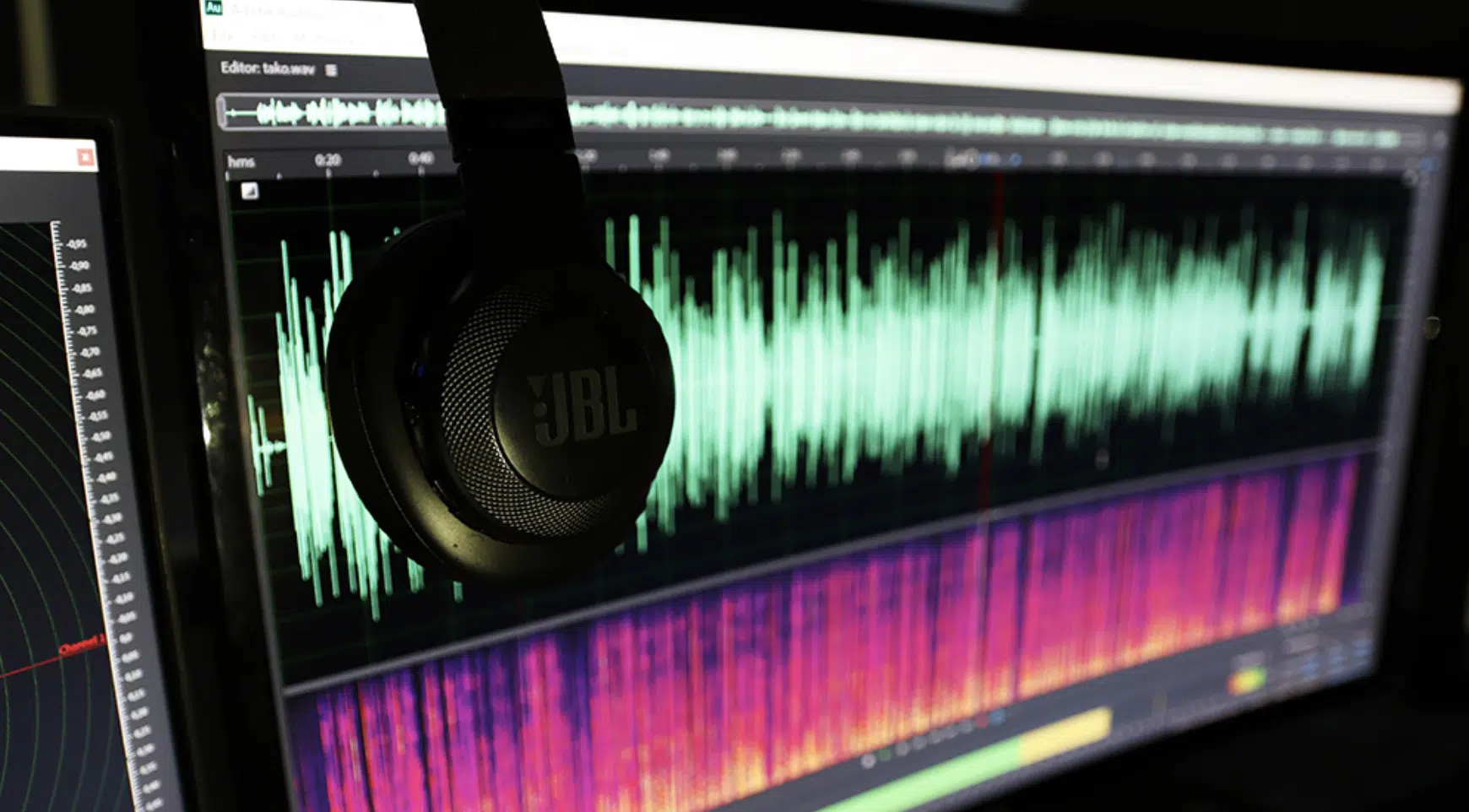
Mixing and mastering are often grouped together in conversation, but they are very, very different.
When you’re learning how to produce music, it’s essential that you know the differences.
Mastering is the final polish, which you can do yourself or hire a mastering engineer for.
It’s about ensuring your track sounds cohesive and retains its quality across various playback devices.
Mastering is also about achieving optimal loudness levels without sacrificing dynamic range; helping your music sound good and professional.
Limiting is fundamental when it comes to mastering.
Tools like the iZotope Ozone or FabFilter Pro-L can boost the overall level of your track and ensure it’s competitively loud.
NOTE: Be aware of over-compression which can kill dynamics.
Spectral balancing is also pivotal.
Tools such as the iZotope Tonal Balance Control can help you maintain a balanced frequency response in line with genre-specific targets.
It’s about making sure your track sounds as good on headphones as it does on club speakers.
For DIY music producers 一 investing in a quality pair of mastering headphones or headphones designed for sound design is vital.
Brands like Sennheiser or Beyerdynamic offer flat-frequency-response headphones that give an uncolored representation of your track.
As you transition from crafting tracks to releasing them to the world, understanding the business side is paramount, so let’s get into it…
-
Promoting and Distributing Your Tracks

The music landscape has most certainly evolved as of late.
Streaming platforms like Spotify, Apple Music, and SoundCloud have democratized digital distribution for a finished song(s).
Utilize platforms like DistroKid or TuneCore to push your tracks to multiple streaming sites simultaneously.
Social media is also invaluable, of course.
Make sure to engage with your audience on platforms like Instagram or TikTok, through means of:
- Sharing behind-the-scenes content
- Beat-making sessions
- Collaborating with influencers
This can catapult your track to wider audiences, catch the attention of other music producers, and get your name/music out there.
Music videos (even DIY music videos) can visually represent your sound.
Platforms like YouTube not only provide visibility but can also be monetized as an additional revenue stream.
Remember to always keep an eye out for playlist placements.
Many independent curators or official streaming platform playlists can boost your track’s streams exponentially.
Finally, when it comes to music production, networking and pitching correctly is the key.
So, make sure to always stay persistent, but don’t be overly pushy or annoying, as that can get you black-balled.
If you’d like to learn everything about music promotion, we’ve got you covered!
Producing Music: Advanced Tips & Tricks
Once you’ve mastered the basics on music production and how to produce music, there are some creative and interesting practices that you can play around with.
Here are a few of the most beneficial, and my personal favorite that can help you with music making and sound design.
-
Parallel Compression

Parallel Compression, often referred to as “New York Compression,” is a technique that involves blending a dry, or untouched, version of the sound with a heavily compressed version of the same sound (your own sound).
This technique can add punch to drums or bring vocals to the forefront without losing dynamic range in your actual music.
-
Side-Chain Compression
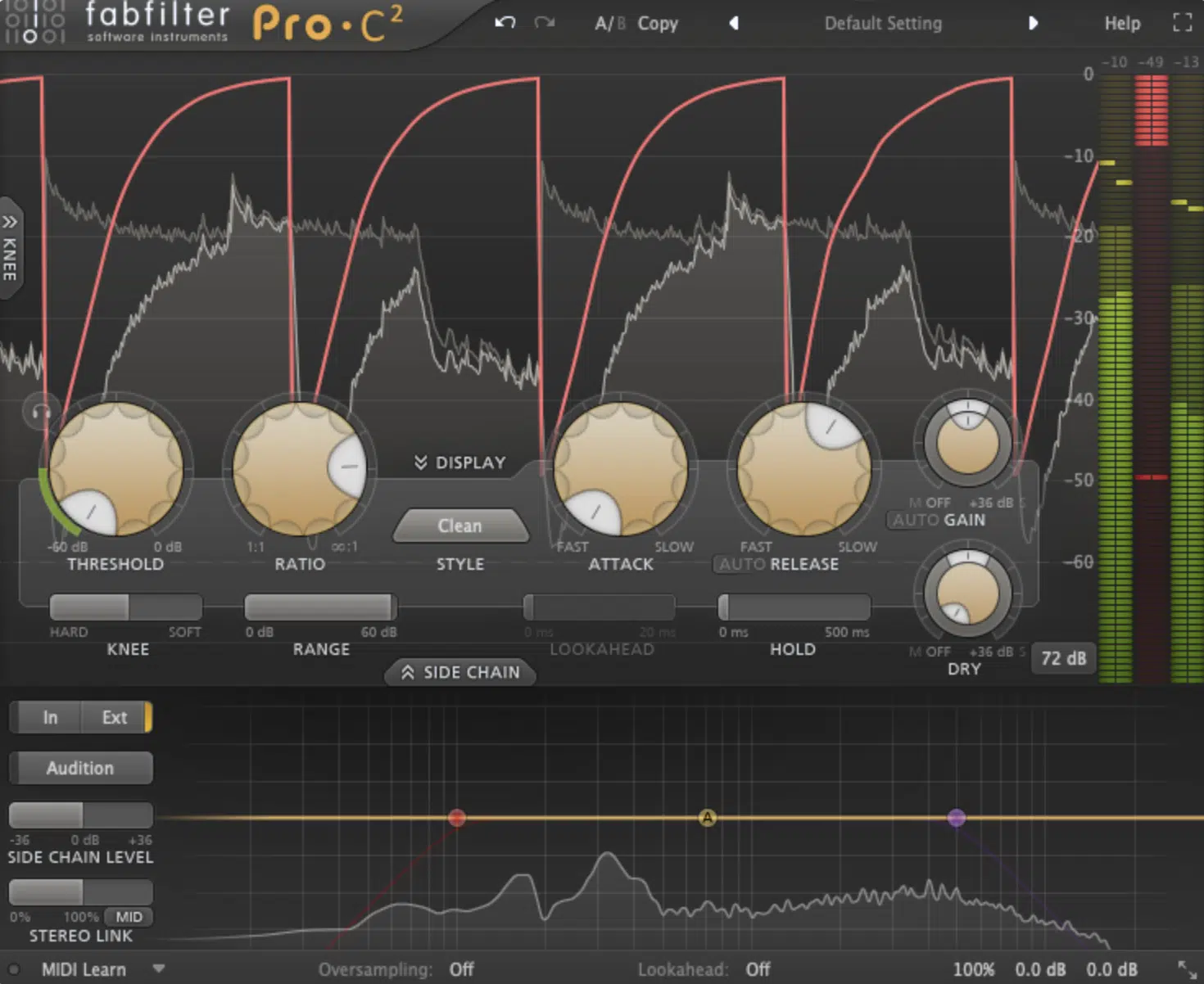
Side-chain Compression is a favorite in many hip-hop tracks 一 especially when you want that pulsating, rhythmic feel.
By compressing an instrument (like a bass) in response to another sound (like a kick drum), it can make space for impactful moments and create a rhythmic pumping effect.
-
Mid-Side Processing
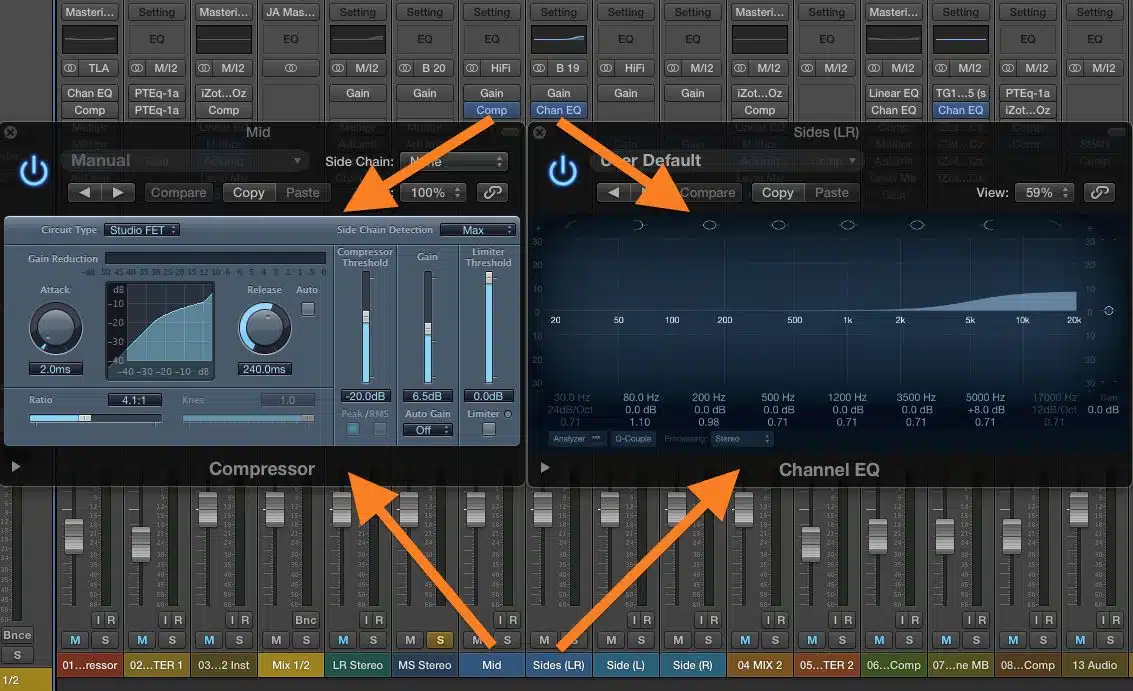
Instead of the usual left-right stereo perspective, mid-side processing separates the center content from the sides.
This allows music producers to treat the middle (vocals, snare, bass) differently from the side elements 一 creating a wider, more dynamic stereo image.
-
Frequency Layering

When you’re learning about music production and how to produce music, layering two sounds that occupy different frequency ranges can create a richer, fuller sound.
For example, pairing a deep bass with a higher-pitched synth can result in a more enveloping bass presence.
-
Transient Shaping
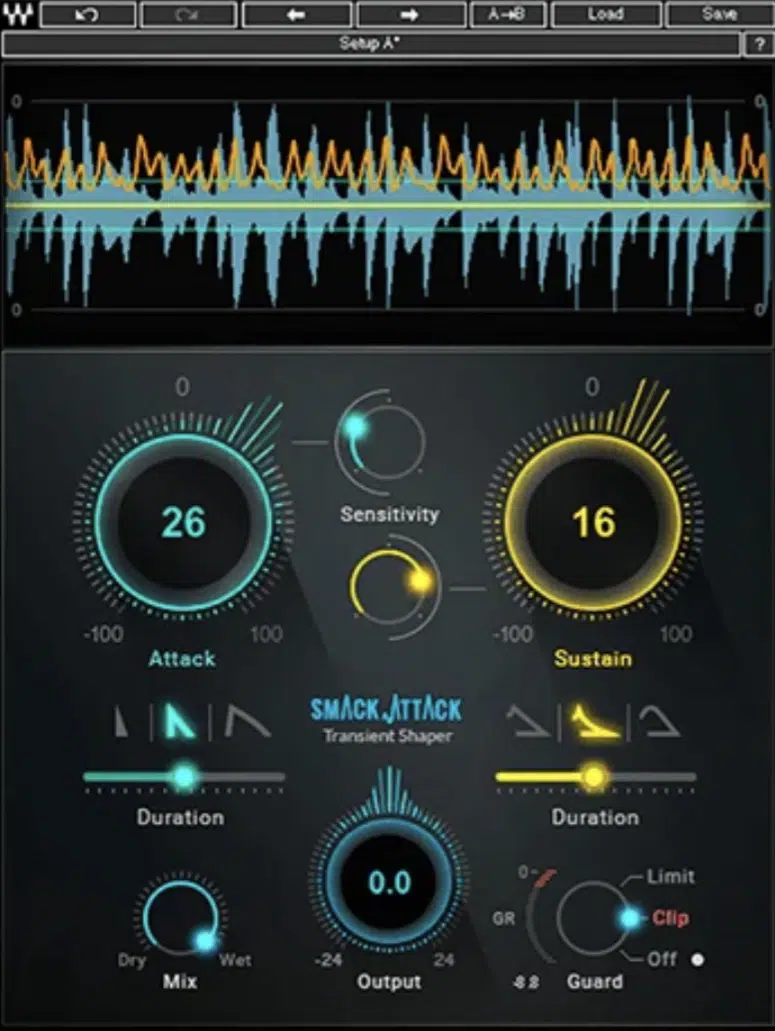
In the realm of beat-making (and a favorite in the world of electronic music), the attack and decay of a sound play pivotal roles.
Transient shapers help in accentuating or diminishing these aspects, making drums punchier or softer depending on the desired effect.
-
Sample Manipulation
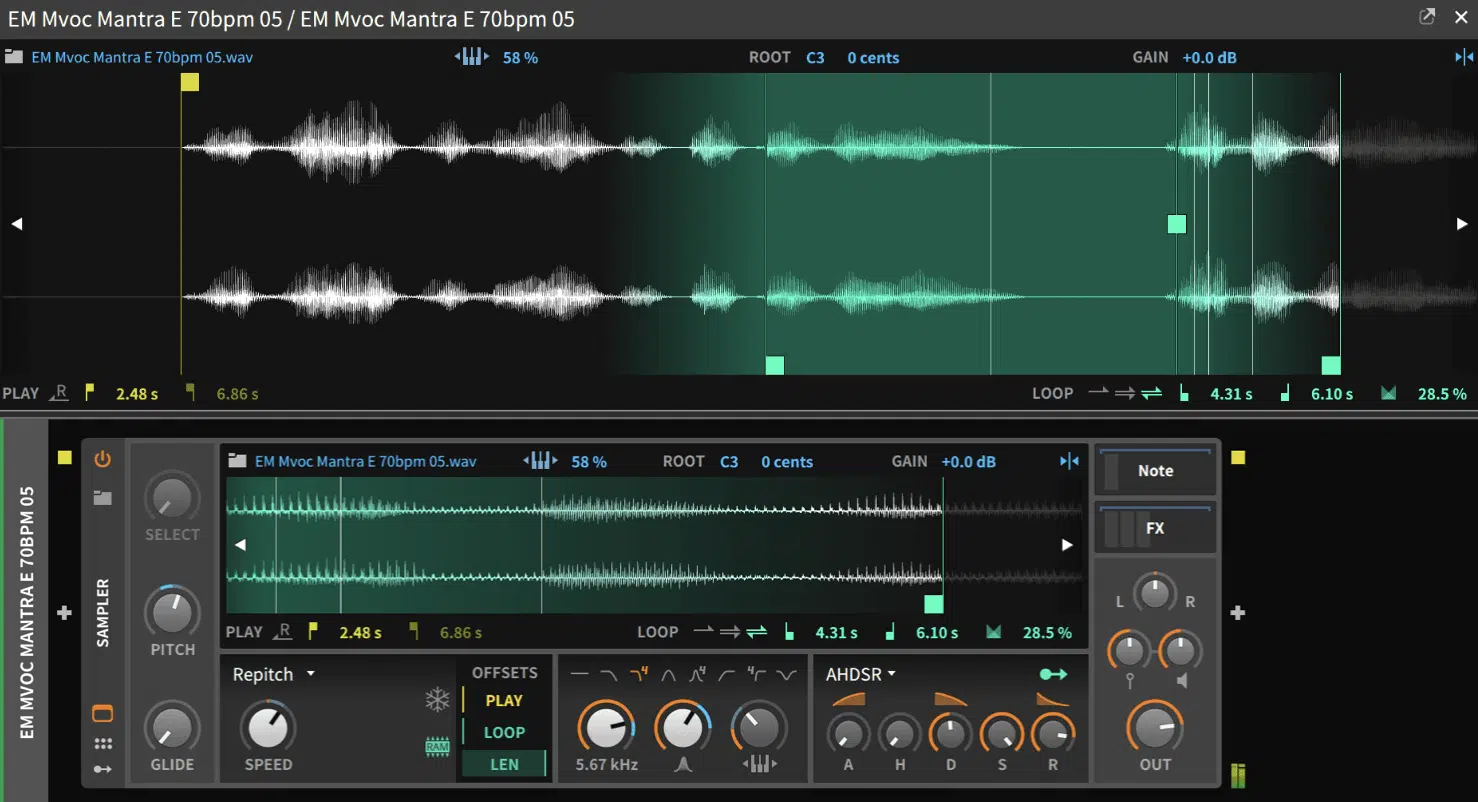
Modern DAWs offer a plethora of tools to twist, stretch, pitch, and mangle samples.
Try to get creative by:
- Changing the playback speed
- Reversing the sample
- Running it through granular processors
This can produce entirely new textures and vibes 一 breathing fresh life into old sounds.
PRO TIP
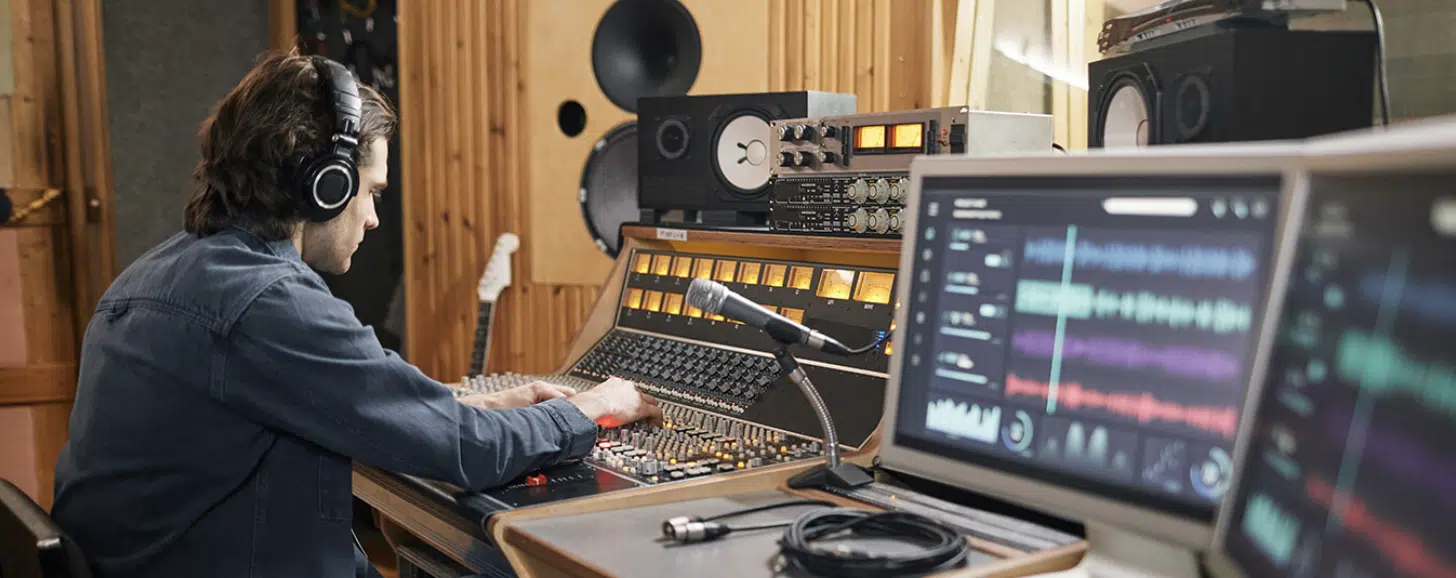
While versatility is commendable, having a signature sound can set you apart.
Think of producers like Timbaland, Dr. Dre, or Metro Boomin 一 their tracks are instantly recognizable.
Delve into genres outside of hip-hop, such as adding elements from:
By doing so, it can give your tracks a super unique, intriguing flavor.
Experiment with unconventional recording techniques.
From recording natural ambiances to using household items as percussions, think outside the box.
Try analyzing your favorite tracks to understand what draws you to them, and see how you can integrate similar elements while maintaining originality.
How To Produce Music: Final Thoughts
Mastering the intricacies of how to produce music can seem overwhelming at first.
However, as you’ve seen throughout this guide, with the right tools and knowledge, anyone can embark on this rewarding journey.
As long as you have the drive and stay persistent, you can flourish in the music industry.
The realm of music production is vast and constantly evolving, but the foundational principles remain the same.
By understanding the musical tools, techniques, and tips/tricks, you can truly unlock your potential in the world of music production.
One invaluable tool that can significantly expedite your learning process on how to produce music is the Free Black Friday Pack.
With its 625 unique samples, MIDI’s, and presets, this pack offers an immersive experience into the world of professional music production.
Plus, the templates it provides are particularly insightful…
They allow you to analyze, study, and reverse-engineer how a top billboard track is produced.
From the initial stages of recording and production to the final master, every aspect is crafted with precision 一 providing a holistic understanding of the production process.
As you continue your quest to learn how to produce music, remember that every producer (from the amateur to the industry expert) started where you are now.
With passion, dedication, and the right resources like the free Black Friday Pack, you’ll be well on your way to producing tracks that resonate with listeners worldwide.
Until next time…







Leave a Reply
You must belogged in to post a comment.